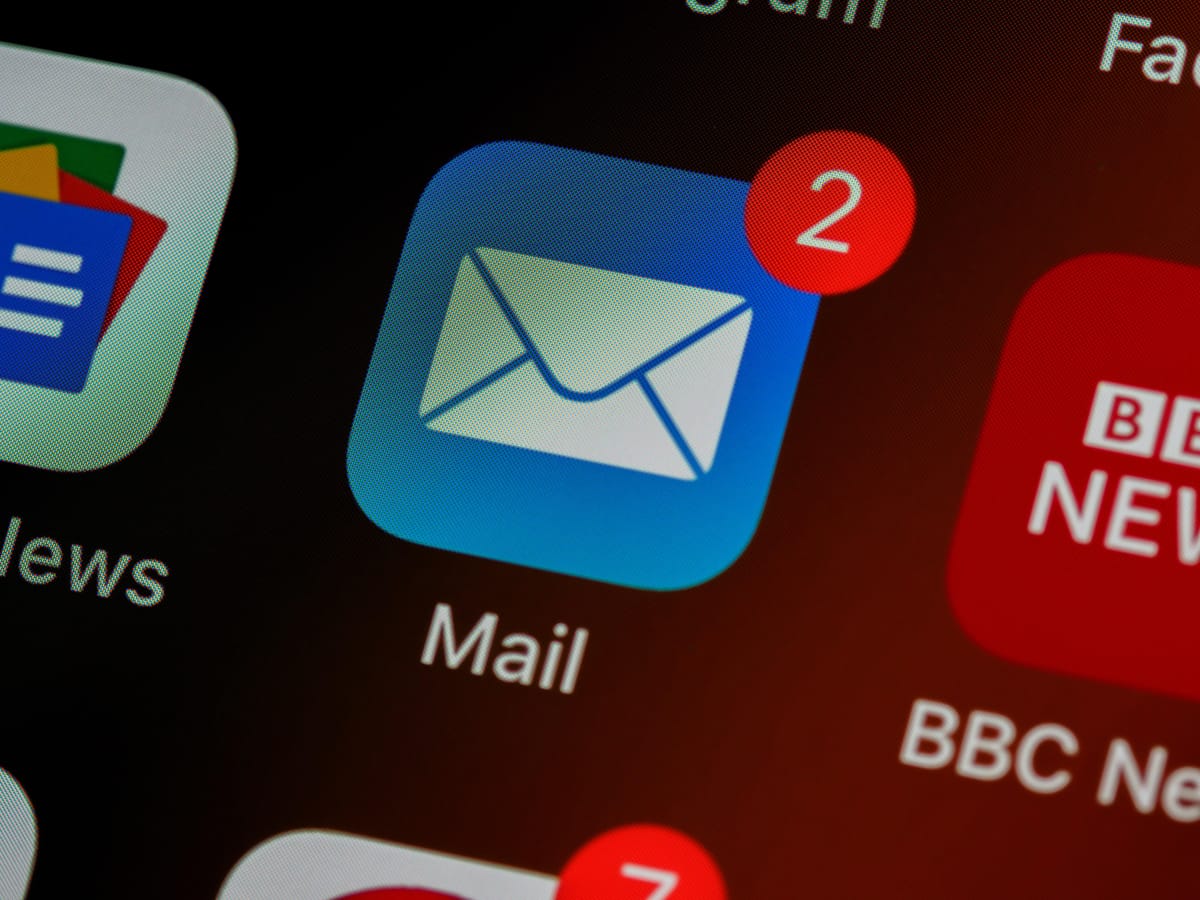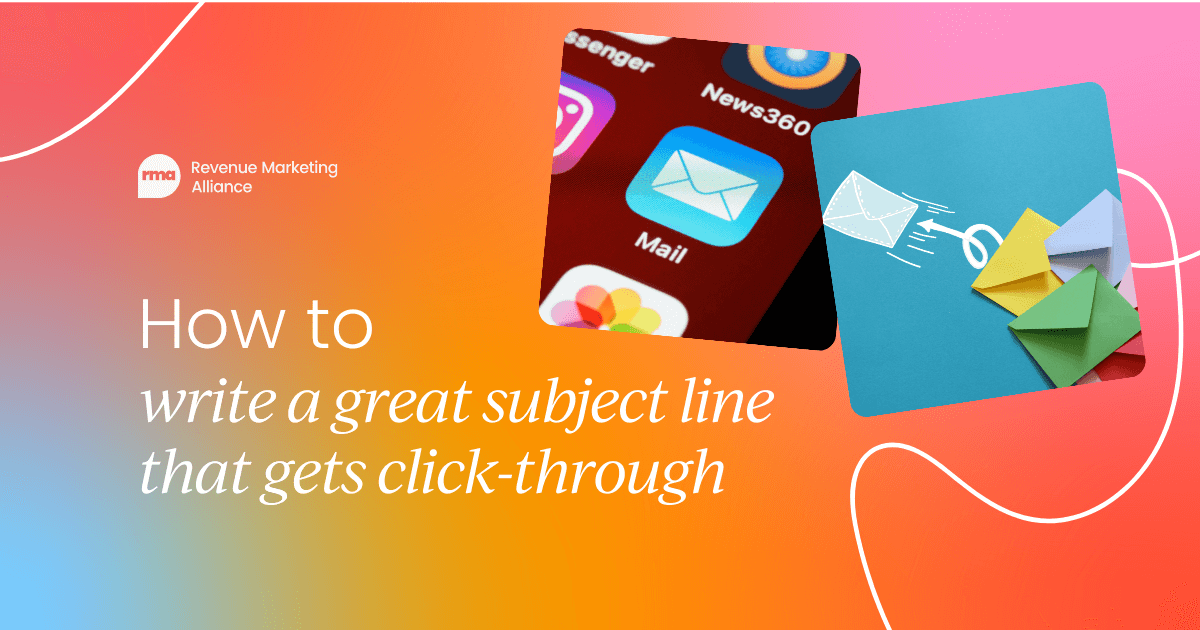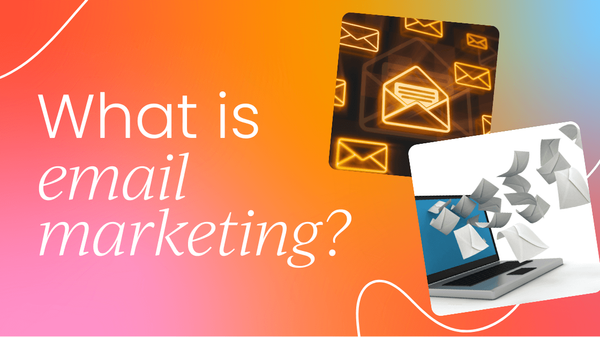Email remains a cornerstone of effective communication and sales strategies. Despite the rise of new digital channels, B2B email marketing continues to deliver impressive results, with the potential for an astounding 4100% return on investment.
At its core, B2B email marketing is about building and nurturing relationships with other businesses. It's a versatile tool that allows companies to generate leads, convert opportunities, and maintain ongoing connections with clients and prospects alike.
With 99% of email users checking their inboxes multiple times a day, it provides a direct and reliable way to reach decision-makers and influencers in the business world.
This guide will walk you through the essentials of creating and executing successful B2B email marketing campaigns. From crafting compelling content to leveraging data-driven strategies, you'll discover how to harness the power of email to drive your business forward in the digital age.
- What is email marketing?
- Why is email marketing important?
- How to write a marketing email
- B2B email marketing best practices
- 7 email marketing tools for B2B marketers
- How to improve your B2B email marketing with AI
- How can email marketing fuel your overall inbound strategy
Oh man, sometimes don't you just wish you could take an article away with you as an eBook? Well, fortunately, you can do just that!
Download this guide as an eBook by clicking this button right here. 👇
What is email marketing in B2B?
B2B email marketing is the practice of using email to build and maintain relationships between businesses. It involves crafting tailored messages that speak directly to the needs, challenges, and goals of other companies.
Unlike consumer-focused email marketing, B2B campaigns often address multiple decision-makers within an organization and tend to have longer sales cycles.
As mentioned above, B2B email marketing is about delivering value. This can take many forms, from sharing industry insights and product information to offering solutions that streamline operations or boost profitability.
By leveraging the universal reach of email, businesses can nurture leads, showcase their expertise, and ultimately convert prospects into loyal clients.
Effective B2B email marketing combines strategic planning, compelling content, and data-driven insights to create messages that resonate with business audiences. Whether it's a newsletter, a product announcement, or a personalized sales pitch, each email serves as a touchpoint in the broader journey of building lasting business relationships.
Why is email marketing important?
Some people would have you believe email is dead. After all, don’t you get tired of sifting through your own inbox day after day? Relegating so many spam emails to your trash folder without even opening them?
But you no doubt have emails from certain companies that you look forward to opening because you want to learn more about the products you enjoy, so you actively engage with them.
Well, it’s these kinds of emails you want to be producing for your own subscribers.
But it’s not just hearsay, with 77% of marketers having seen an increase in email engagement over the last 12 months. Emails are ideal for creating meaningful customer relationships, and they produce an insane ROI, making it one of the most cost-effective marketing tools out there.
But aside from just gaining customers through email subscriptions, email marketing is also ideal for retaining customers (which is crucial when you consider it’s five times more expensive to gain a new customer).
How to write a strong marketing email
So, how do you write those killer emails that’ll draw your audience in and encourage sales?
Well, there’s a lot to consider outside of just the content itself. But to get you started with email, we have four free welcome email templates that cover:
- Product purchase
- Service sign-up
- Newsletter sign-up
- Event registration

1. Define the purpose of the email
- Establish the goal: Is it lead generation, nurturing, promoting a product/service, or setting up a call/meeting?
- Know your audience: Tailor the message to their needs, challenges, and industry-specific pain points.
- Focus on value: What will the recipient gain by opening and acting on this email?
2. Craft an attention-grabbing subject line
- Keep it clear and concise: B2B audiences value direct communication. Aim for a subject line that highlights value or urgency without being too “salesy.”
- Use personalization: Adding the recipient’s name or company name can make it more engaging.
- Avoid spammy language: Words like "Free," "Urgent," or excessive punctuation can send the email to spam folders.
3. Write a strong opening
- Personalize the greeting: Use the recipient's name and mention something relevant to their business or role.
- Address pain points immediately: Start with a challenge they may be facing, followed by how your company can solve it.
- Create curiosity: Engage them enough to read on.
4. Provide clear, valuable content
- Get to the point: B2B readers are typically busy, so avoid fluff. Lead with the most important information and keep it brief.
- Focus on benefits, not features: Emphasize how your product or service solves their specific problems or improves their business.
- Use bullet points: Make it easy to scan key information.
- Include data or insights: B2B buyers respond well to statistics or examples of how you’ve helped similar companies.
5. Include a strong call to action (CTA)
- Be clear and specific: Use action-oriented language like “Schedule a demo,” “Download our whitepaper,” or “Start a free trial.”
- Make it relevant: The CTA should tie directly to the goal of the email, whether it’s to book a meeting, download a resource, or visit your website.
- Limit to one CTA: Avoid overwhelming the recipient with multiple actions to take.
6. Use professional design and layout
- Keep the design simple and professional: Clean layouts work best in B2B marketing. Use your brand’s colors and fonts to ensure consistency.
- Optimize for mobile: Ensure the email is mobile-friendly as many decision-makers read emails on their phones.
- Incorporate visuals strategically: Use relevant images, charts, or videos to break up text, but don’t overload the email.
7. Personalization and segmentation
- Leverage segmentation: Tailor your emails based on the recipient’s industry, job role, or stage in the sales funnel.
- Use dynamic content: Personalize not just by name, but by including content relevant to their specific needs or past interactions with your company.
8. Provide social proof
- Include testimonials or case studies: Decision-makers trust the opinions of their peers, so include quotes or examples of success stories from other companies.
- Show numbers: Include data like how many companies or customers use your product or service and the results they’ve achieved.
9. End with a professional signature
- Include contact details: Make it easy for the recipient to follow up with you. Include your full name, title, phone number, and a link to your LinkedIn profile or website.
- Add a human touch: If appropriate, include a photo or personal note that makes you appear approachable.
10. Optimize for deliverability
- Avoid spam triggers: Stay away from words or formatting that may cause the email to land in spam. As mentioned above, there are certain words that will be flagged. Try a free spam word checker like this one from Folderly to avoid this.
- Use a recognizable sender name: Recipients are more likely to open emails from a person’s name rather than a generic company email.
- Provide an unsubscribe link: Ensure compliance with email regulations like GDPR and CAN-SPAM.
11. Test and iterate
- A/B test subject lines and content: Find what resonates best with your audience by testing variations.
- Measure performance: Track open rates, click-through rates, and conversions to refine your approach over time.

B2B email marketing best practices
When it comes to putting together your email marketing strategy there are some things you need to know.
It’s not enough to just write out an email, click send, and hope for the best. To make sure you’re getting to the top of the game, you need to consider:
- The time you’re sending out emails
- The subject line
- The email content
- Optimization for mobile devices
- Personalization and segmentation
Ensuring you're always sticking to email marketing best practices is essential. For a more in-depth look at the different components of writing those perfect emails, take a look at this blog post:

Are you an email marketer looking to expand your skills into other areas? We've got a guide for email marketers looking to become more t-shaped:

Performing these processes and testing manually can be incredibly time-consuming and labor-intensive.
Fortunately, there’s a multitude of tools available to help you, from creating eye-catching designs, sending them out at pre-determined times, and tracking and monitoring engagement data.
7 email marketing tools for B2B marketers
Sendinblue
Whether you reach them by email, SMS, or chat, Sendinblue revitalizes your customers’ journey by automating the segmentation and marketing message processes and improving the design, deliverability, and engagement of transactional comms.
In addition, it lets you create dedicated landing pages, custom forms, Facebook ads, and retargeting campaigns from within the app.
Website: sendinblue.com
Cost:
Pardot
Part of Salesforce, Pardot sells all the tools needed to create, deploy and manage online marketing campaigns - automatically.
Its solutions streamline lead management, smarten up lead gen, make email marketing effortless, align marketing and sales, match revenue against the activity, and use AI to ensure the right contacts are being approached at the right time.
Website: pardot.com
Cost: Pricing is based on annual billing
Campaign Monitor
Start-to-finish solutions to get impactful email campaigns out of the door. Campaign Monitor comes with 100s of templates (including things like countdown timers), lets you create personalized automation journeys, and enables data segmentation.
If you’re looking to build your base you can also grow your audience with signup forms and if you’re after ways to improve, its analytics suite gives an aggregate overview of your performance and drills into your data on a geographic, engagement, and acquisition level.
Website: campaignmonitor.com
Cost: The price will depend on how many people you’re emailing but based on 5,000 you’re looking at:
VerticalResponse
With VerticalResponse, you can create branded emails in a matter of minutes, automate campaign sends, build landing pages from scratch or using templates (without code), analyze results by things like open rate, clicks, device, and location, and design and send feedback surveys.
Website: verticalresponse.com
Cost:
GetResponse
Pre-designed marketing funnels (including emails, signup forms, webinars, and sales pages), 150+ landing page templates, easy-to-build e-commerce stores, social media ads, and automated campaigns are just some of the ways GetResponse helps organizations grow their audience and increase sales.
Website: getresponse.com
Cost:
Drip
Drip helps you understand your market so you can make campaigns truly personal. First, it digs deep into the data with tags, custom fields, and customer behavior, then, using that info, it creates segments, sets up behavior-based automation, and sends out personalized content across multiple channels.
Website: drip.com
Cost: $49
Marketo
Marketo’s an Adobe company and comes with three offerings: Marketo Engage. Brings marketing and sales together to create personal experiences, and custom content, and track performance through every stage of complex buyer journeys.Bizible.
Delves deeper than just clicks and leads to create accurate and actionable pictures of what is and isn’t working, as well as the impact on your bottom line.Adobe Experience Cloud. End-to-end customer experience management for marketing, advertising, analytics, and e-commerce.
Website: marketo.com
Cost: Varies depending on database size

Improving your B2B email marketing with AI
For any stellar marketing campaign to be successful, email marketing is vital. We mentioned earlier that 99% of email users check their inbox daily, some as much as 20 times a day!
But with so many emails flooding people’s inboxes every single day, how can you possibly make yours stand out and get those much-sought-after click-throughs?
AI could be the missing factor in your email marketing campaigns.
Personalized emails
It’s no secret that personalization is key when it comes to email marketing. In fact, emails are 26% more likely to be opened when they have personalized subject lines, and marketers report a 760% increase in email revenue when using personalized, segmented campaigns.
But who has time to go through your email list manually and compose individual emails for each customer? It would be impossible.
That’s where AI comes in.
It uses information gathered from past customer transactions, their preferences, and browsing habits to generate the best-personalized email campaigns to suit your leads.
Here are just some of the ways AI can personalize emails to your customers:
Subject lines
Subject lines are crucial as they determine whether someone will even open your email to take a look, so you need something relevant to the receiver. AI algorithms can generate opening sentences that resonate with that customer and improve the chances of them opening the email.
It will analyze the effects of your email marketing strategies to enhance your subject lines over time, so instead of using trial and error, it uses data-driven observations.
Read up on how to create the perfect subject line here:

Promotions and discounts
Providing exclusive discounts to people on your mailing list is the perfect way to boost your customer base and subsequent sales. AI can tailor deals to each customer by assessing the best offer for them based on collected data.
An offer for one customer may not work for another, so by offering perks like discounts or free delivery to specific customers, you increase the likelihood of a sale.
Automated content
Just like automated subject lines, the entire content of the email can also be automated. AI can use pre-written copy, images, snippets from blog posts, links, and even machine-generated content to create personalized emails perfectly optimized for a high engagement rate.
The algorithm can decide on the optimal combination for the different kinds of content, saving you significant time.
Product recommendations
Personalized product recommendations encourage customer loyalty and boost your click-to-convert ratio for your emails.
The AI algorithm can let you know about your customer’s buying and browsing history, boosting your emailing marketing strategy and eventually enhancing it to the point of sending out personalized product recommendations in real time.
Automated email marketing
Aside from knowing what kind of email content is the most effective for specific customers, it also pays to know precisely when to send those emails. Emails flood people’s inboxes all day, every day, so knowing the best time to send and actually get people’s attention is essential.
Predictive analysis and AI can study customer behavior and build an automated emailing system based on the insights it generates from data.
When you send too many emails, you can frustrate people, but too few can mean you lose them to the competition. AI can take out the guesswork and determine the correct number of emails and when to send them, based on your customer’s activity history.
The AI can use time zones and the personal habits of your customers to really pinpoint your email schedules, giving you the very best ROI.
Increase subscriber base
Aside from all the improvements to your email messaging and content, you can also use AI to help build your subscriber base. AI tools like chatbots are incredibly popular, and these bots can take what used to be a time-sensitive job of gathering information and making it an automated part of your campaign.
Chatbots can be programmed to request details from customers engaging with them, such as their email addresses. This information can then be automated into your email marketing and added to your mailing list. It’s a quick and easy way to widen your subscriber base, consequently generating more leads.
Improved segmentation
Machine learning, a branch of AI, can help marketers learn more about their customer base, not just with basic information like age, location, or gender, but more specific behavioral signals. Your customers’ subtle behavioral patterns can be turned into distinct marketing segments that can be targeted with personalized campaigns.
Your customers will have specific interests and needs, so it’s crucial to create separate lists and target them based on these details. But rather than slogging through this process manually, AI can perform this segmentation automatically, taking away the needless legwork. By segmenting your mailing list in this way, you improve your open rate, click-through rate, and your overall conversions.
Increased engagement
The manual process of email marketing involves testing the right combination of subject lines, email content, and images to discover which emails work the best for certain audiences. It’s a tedious, time-consuming process that is prone to human error.
With AI streamlining this process, you can generate the very best content for optimal results in terms of conversion and ROI. Without wasting so much time on manual testing, you can send out the perfect combinations of messaging elements to engage with your audience.
You significantly reduce the likelihood of your emails being deleted without being opened, and increase the chances of getting your customers to engage with your messaging.
How can email marketing fuel your overall inbound strategy
Email marketing can do a lot for your business. When you send out engaging content, your audience will learn to see you as a thought leader in your industry and keep coming back for more.
Email is a crucial tool for driving inbound traffic and can promote your blog posts, new products, and services, upgrades, and encourage customer loyalty.
Using an inbound strategy means acquiring and responding to customers using email, creating a dialogue with them with useful content that they want to receive.
The goal of an inbound marketing strategy is to attract new customers, generate referrals, answer questions about your products and services, convert prospects, show appreciation for customer loyalty, and provide something valuable to your subscribers.



 Follow us on LinkedIn
Follow us on LinkedIn








